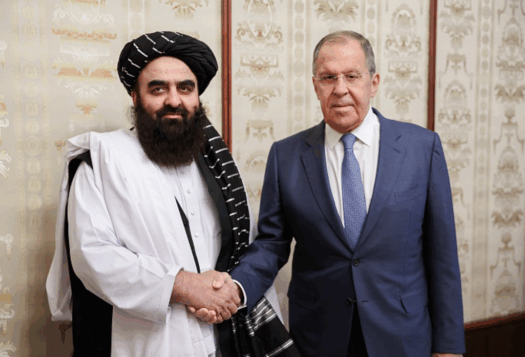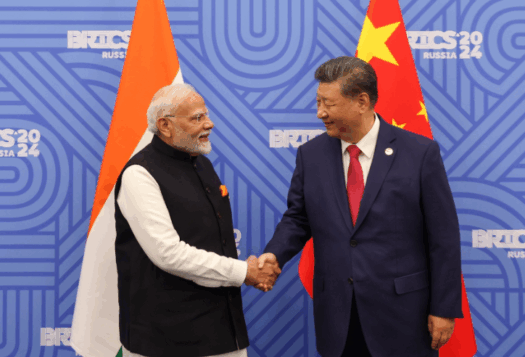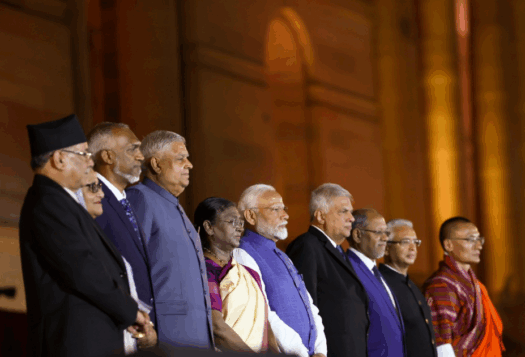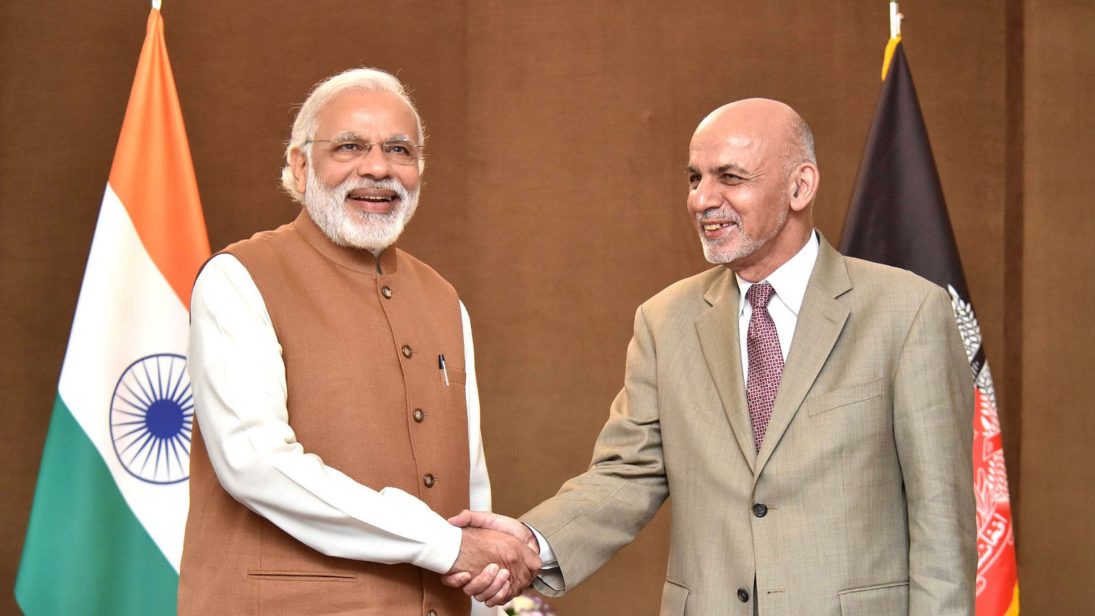
The past year has seen successive attempts of strategic evolution by the United States to end the war in Afghanistan and revamp its influence in the Indo-Pacific region. One commonality of both strategies has been India, which the United States called upon to increase both its military presence in the Indian Ocean and economic engagement in Afghanistan. The Strategy in Afghanistan and South Asia (SAS), announced by President Donald Trump on August 21, 2017, may be seen as the launching pad for both initiatives.
While the SAS resulted in no paradigm shift in Indian policy towards Afghanistan, it may be seen as having a positive impact on the trajectory of both U.S.-India and Indo-Afghan relations, with the added benefit of moving the needle forward on much-needed development projects that can be harnessed if the war comes to an end. While the realization of coinciding U.S.-India interests on Afghanistan seems to contradict Pakistan’s interests, India’s development assistance should be seen as a complementing Islamabad’s role to bring stability to the country rather than detracting from its importance.
India-Afghanistan-United States Triangular Dynamics
The SAS announcement, in which President Trump deemed India a “key security and economic partner for the United States,” singled out with appreciation its “important contributions to stability” and called on New Delhi to do more in the area of economic assistance and development in Afghanistan. While the president’s kind words about India in this context may seem natural given the progression of India-U.S. bilateral ties into strategic partnership, the announcement was notable at the time due to the stark contrast between Trump’s words for India and his harsh language towards Pakistan. In India, many saw the speech as a shift in U.S. policy, as concerns raised by Pakistan over the past decade had led to some apprehension on behalf of the United States in India’s presence in Afghanistan.
Upon the release of the new SAS, some commentators speculated at the time that, “This strategy of containment and coercion could be coupled with a distinct diplomatic ‘tilt’ toward India.” However, with this change in policy the United States was neither equating India with Pakistan nor replacing it. In fact, Trump’s mention of India was most likely due to his desire not to fund the development of Afghanistan singlehandedly. Reflecting this, Trump’s language against a whole-of-government approach to the Afghan conflict was pronounced; “We are not nation-building again,” the U.S. president declared in the speech.
Trump’s mention of India was most likely due to his desire not to fund the development of Afghanistan singlehandedly. Reflecting this, Trump’s language against a whole-of-government approach to the Afghan conflict was pronounced; ‘We are not nation-building again,’ the U.S. president declared in the speech.
While Trump may have been hesitant to invest in the Afghanistan’s development sector, he likely also realized that stability cannot be just achieved by eliminating terrorists but is a holistic phenomenon consisting of economic, political, and social aspects. Hence, the United States was looking for other investors: India could be one, while the European Union came out with New Strategy on Afghanistan in October 2017 with a thrust given to the developmental sector. However, he could not ask China or Russia for obvious reasons, and Pakistan could play a role in security matters but may not invest due to its financial crisis. Besides, India’s enduring model of development aid and soft power diplomacy in Afghanistan has been a success, a fact that perhaps drew U.S. attention to the enhanced role New Delhi could play in the country.
The top leadership of Afghanistan, including Foreign Minister Rabbani, Chief Executive Officer Abdullah, and President Ghani, visited India within the first three months following the announcement of SAS. In the month of September 2017, the second meeting of the Strategic Partnership Council between India and Afghanistan was conducted in New Delhi, during which time both countries stressed on the need for making regional transit and trade agreement more inclusive in connecting South Asia and Central Asia. Furthermore, they agreed on the initiative “New Development Partnership,” under which India will take on 116 high impact community projects, including the Shatoot Dam and Drinking Water project for Kabul, low cost housing, Gypsum board manufacturing plant, among other projects. However, while these projects and investments have promise, there are also risks associated with them. The security situation across Afghanistan will likely be a limitation to future Indian engagement.
Meanwhile, India-U.S. relations have been deepening, with the last year having seen an Indian centrality within U.S. policy towards the Indian Ocean region (IOR). Under the Indo-Pacific strategy, in June 2018, the United States has renamed its U.S. Pacific Command (PACOM) as the Indo-Pacific Command (INDOPACOM). At the same time, the recent 2+2 dialogue saw New Delhi and Washington agree to major steps, including the Communications Compatibility and Security Agreement (COMCASA). This marked improvement in the Indo-U.S. relationship can be seen at least in part as the result of the SAS, which preceded the Indo-Pacific strategy and other such India-focused U.S. policy shifts.
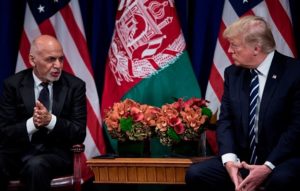
Addressing Concerns from Pakistan
While briefing the media on the agenda of the U.S.-India 2+2 dialogue between India and the United States, chief South Asia diplomat Alice Wells said that, “We welcome the fact that India has stepped up and has evinced this commitment and enjoys a strategic relationship with Afghanistan that does not have to come at the expense of any other country in the region.” Yet, Pakistan has voiced its concerns—including after the announcement of the SAS—regarding an increased Indian presence in Afghanistan. This is because historically India and Pakistan have perceived each other as in competition for influence in Afghanistan. In answering President Trumps call to action, India stepped up its development assistance to Afghanistan in the last one year; this shift was, however, in line with its longstanding policy of helping Afghanistan achieve stability through development. This policy goes beyond its rivalry with Pakistan, as India’s ambition to become a regional power by strengthening its economy demands a stable neighborhood. From an Indian perspective, Pakistan’s central role in the stability of Afghanistan cannot be discounted either. Indeed, India’s development assistance is not a subtraction from Pakistan’s interests in Afghanistan, but an addition.
From an Indian perspective, Pakistan’s central role in the stability of Afghanistan cannot be discounted either. Indeed, India’s development assistance is not a subtraction from Pakistan’s interests in Afghanistan, but an addition.
Keeping in mind Pakistan’s concerns, India has tried to limit its cooperation with Afghanistan to a developmental role in cooperation with other regional actors such as Russia and China. Regarding defense cooperation, although India’s policy has been rather restrained, it has increased the number of Afghan trainee military officers in Indian military academies. In July, New Delhi approved the delivery of four MI25 helicopters to Afghanistan, though after getting approval from Russia. However, India recognizes that it has earned goodwill in Afghanistan by maintaining a delicate balancing policy, never directly intervening militarily, and often formulating its policies in cooperation with regional stakeholders. Even with direct support from the United States, it is unlikely that India would be interested in playing a larger security role in the future. For these reasons, Pakistan should not be gravely concerned by a role for India in Afghanistan.
Conclusion
The SAS saw no drastic change in Indian policies towards Afghanistan; New Delhi has only continued its consistent support for infrastructure and social development projects. If stability comes to Afghanistan, these Indian projects will benefit Afghanistan, India, and the region as a whole: readily available infrastructure from Iran to Mazar-e-Sharif and Herat in Afghanistan will serve to connect India and Afghanistan to Central Asia. Until then, however, as long as mutual respect continues to foster deepening India-U.S. ties, as seen in the recent 2+2 dialogue, and limits its cooperation with Afghanistan to a development angle, New Delhi can further build up its Afghan policy while addressing concerns raised by other regional actors, including Pakistan. There is no alternative to this multilateral approach to Afghanistan: India should do all it can to help the United States “seek an honorable and enduring outcome” to the seventeen-year long war.
Editor’s Note: The United States’ Strategy in Afghanistan and South Asia, announced one year ago by U.S. President Donald Trump at Fort Myer military base in Arlington, Virginia, marked a shift in the nature of U.S. presence not only in Afghanistan, but across the region. In this four-part series, Neha Dwivedi unpacks how the South Asia strategy influenced the Afghan peace process, Bismellah Alizada explains how the policy influenced the political and security situation in Afghanistan, Shreyas Deshmukh unravels its impact on Indo-U.S. relations, while Uzair Kayani and Sikander Shah delve into its effect on U.S.-Pakistan ties. How effective were the actions undertaken by the United States after the South Asia strategy was announced, and where is U.S. policy heading one year later? Read the series here.
***
Image 1: Narendra Modi via Flickr
Image 2: Brendan Smialowski via Getty
